
Continued from last week
Would you rather be a fish? Dive in and treat yourself to a fun and fishy five-minute challenge! Are any of their names swimming around in your head? Get started and see if they made it into the quiz!

1. Don't try to hitch a ride on this fish; it's one of the slowest around! Can you name it?
* Painted comber
* Jawfish
* Asian sheepshead wrasse
* Seahorse
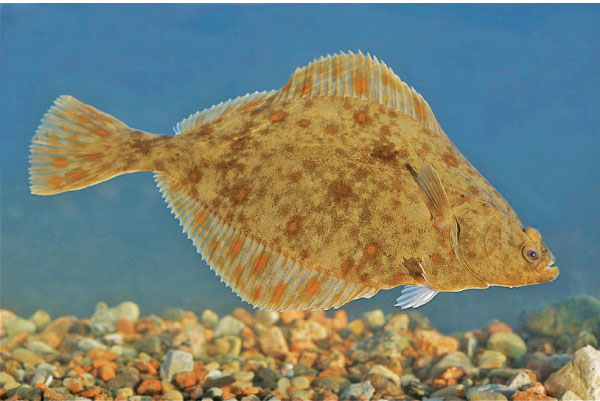
2. If you see this fish stumbling about, it might be from a condition called eye-migration. Can you name the fish?
* Damselfish
* Shorthorn sculpin
* Flounder
* Stonefish

3. This fish uses its long snout to slash prey. Fortunately, it does not pose a danger to humans. Do you know what it is called?
*Sixgillsawshark
*Prickly seadevil
* Butterfly kingfish
*Bigeye trevally
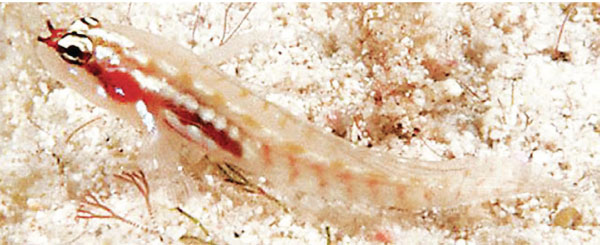
4. This tiny tropical fish is so small you can see right through it! Do you know what it is called?
* Yellowfin tuna
* Spotted trunkfish
* Seven-figure pygmy goby
*Tiger cod
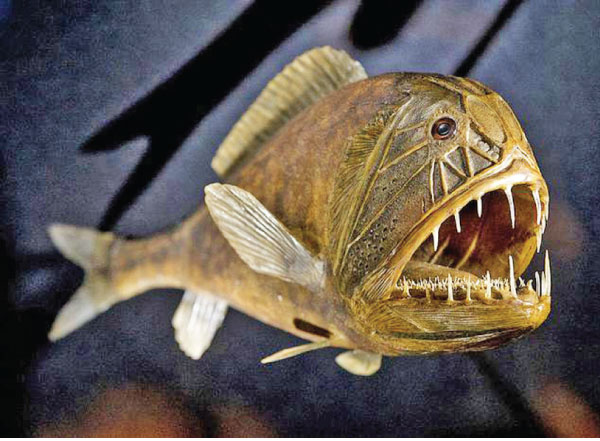
5. Can you identify this fearsome-looking saltwater fish which is among the deepest-diving fish in the world?
*Fangtooth fish
* Mandarin dragonet
* Giant kelpfish
* Carpenter shark

6.This large fish appropriately takes the name of Earth's largest continent. Can you figure out what it's called?
*Largetooth sawfish
* Asian sheepshead wrasse
* Leaping bonito
*Common clown fish
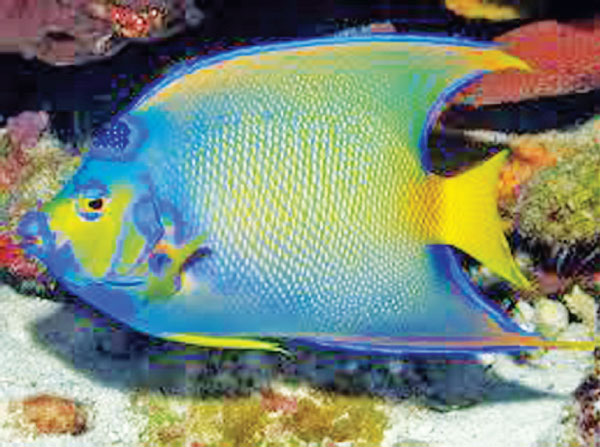
7.The black spot on this fish's head looks like a crown and gives the fish its regal name. Do you know what it is?
* Queen angelfish
* Japanese butterfish
* Great white shark
* Striped bonito
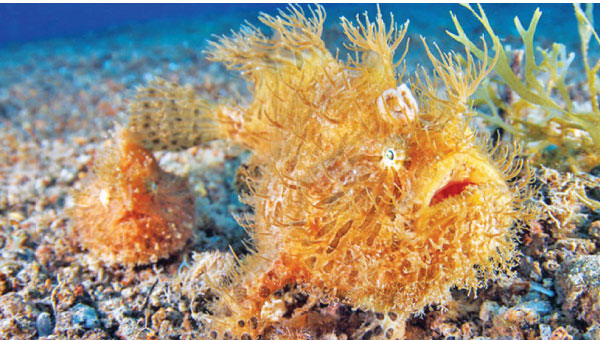
8.This hairy-looking fish doesn't really croak and is actually a type of anglerfish. Can you name it?
* Yellowfin tuna
*Flame hawkfish
*Sand stargazer
*Striated frogfish
Answers
1: Seahorse
Seahorses are relatively small and have prehensile tails which they use to cling to coral and plants so that they are not carried away by sea currents. Interestingly, it is the male seahorse who carries the fertilized eggs (in a pouch at the end of his tail) until they hatch.
2: Flounder
A flounder hatchling has one eye on either side of its head just as most fish do. After a few days, it begins to undergo eye migration where one eye slowly moves until both eyes are on the same side of its head. Some species have both eyes exclusively on the left and others on the right.
3: Sixgill Saw Shark
The sixgill saw shark grows to roughly three feet long. Its typical prey includes fish, squid and shrimp which it slashes with the sharp projects running along both edges of its snout. There is very little interaction between humans and the sixgill saw shark since it lives close to 2,000 feet below the surface.
4: Seven-figure Pygmy Goby
The seven-figure pygmy goby isn't just short (it grows about an inch long), it is also short-lived. In fact, its lifespan of just 59 days is the shortest of any vertebrate. It does, however, keep itself busy — the female seven-figure pygmy goby is able to go through seven breeding cycles in that time!
5. Fangtooth fish
The Fangtooth fish have the largest teeth of any ocean-dwelling creature — in comparison to body size, that is. Adults only grow to about six inches long! Thanks to evolution, the fangtooth fish has pouches in the roof of its mouth so it can close its mouth without puncturing its brain.
6. Asian sheepshead wrasse
The Asian sheepshead wrasse grows to more than three feet long and more than 30 pounds. It isn't the largest of the wrasse; however, the humphead wrasse can get to over eight feet and exceed 400 pounds! Most wrasse are hermaphrodites with the ability to go from female to male at some point in their lives.
7. Queen angelfish
The brilliant colours of the Queen angelfish may seem hard to miss, but they actually work very well as camouflage! The queen angelfish's bright yellow body with its electric blue outline blends right in with the intense colours of the Atlantic Ocean coral reefs.
8. Striated frogfish
Like other frogfish, the striated frogfish is both stocky and lumpy. It is also called the hairy frogfish because of the numerous spinules growing out from its body. As a type of anglerfish, the Striated frogfish has an appendage which looks like a fishing rod and bait, which it uses to lure prey.
To be continued
